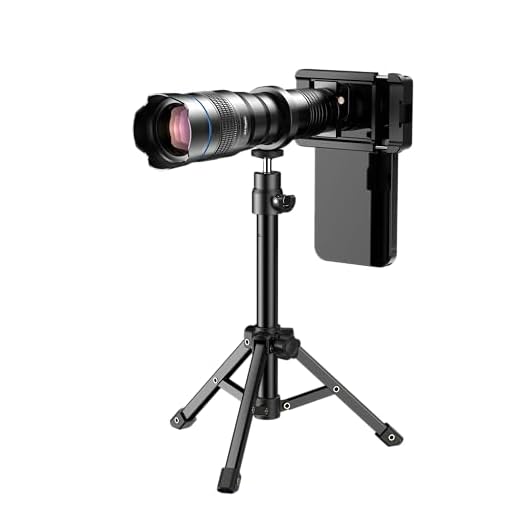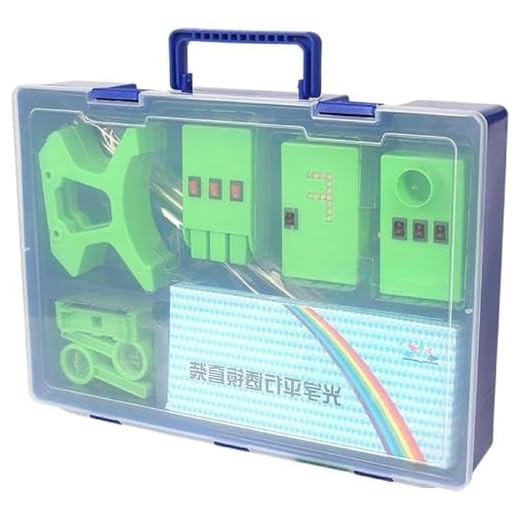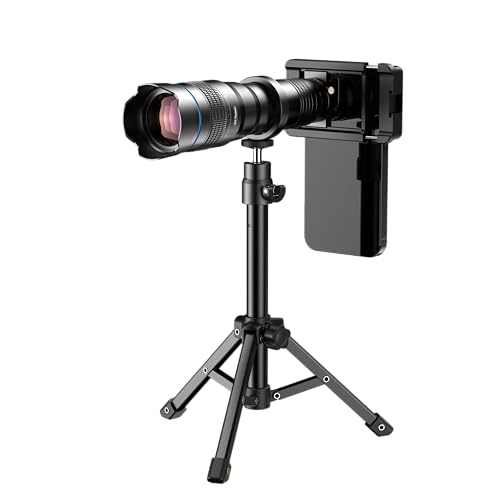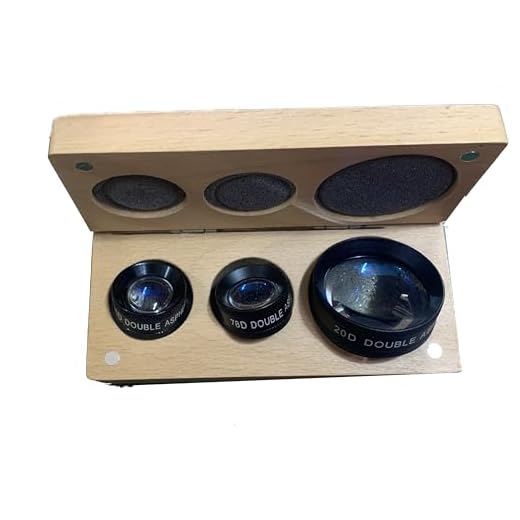



For anyone curious about the optical mechanisms behind photographing, the answer is clear: the primary optical components employed are of the bulging variety. These elements are designed to converge light rays, creating sharp images on a sensor or film. Their curvature is crucial in controlling light paths, ensuring clarity and precision in every shot.
When selecting equipment, it’s essential to understand that these bulging components can vary in design and quality. High-performance variants reduce aberrations and enhance image quality, while more basic types may suffice for casual shooting. Familiarizing oneself with specifications can drastically affect the photographic outcome.
Experimenting with different types of optics also opens new creative avenues. Altering distances, angles, and the choice of these optical pieces contributes significantly to the final image. This adaptability is pivotal for both amateurs and seasoned photographers aiming for unique perspectives.
Do Cameras Use Convex or Concave Lenses?
I recommend focusing on the primary optics found in imaging devices: they predominantly employ convex elements to converge light rays. This characteristic facilitates the formation of sharp images, capturing detailed scenes efficiently.
Optical Design Considerations
Several key aspects are integral to the optical configuration:
- Focal Length: Longer focal lengths provide greater magnification, while shorter lengths yield wider angles.
- Aperture Size: A larger aperture allows more light to enter, enhancing low-light performance.
- Distortion Control: Incorporating specific shapes helps manage distortion, ensuring accurate imaging.
Types of Optical Elements Used
Within these devices, multiple optical elements are combined. The following are common:
- Lens Groups: Comprising multiple glass elements working together to optimize image quality.
- Aspheric Elements: Reducing spherical aberration, these surfaces improve overall sharpness.
- Filters: Modifying light before it reaches the sensor, filters can enhance color accuracy or reduce glare.
Understanding these principles will aid in selecting the right equipment for achieving desired results in various lighting and composition conditions.
Understanding Lens Types in Photography
For achieving desired effects and image quality, it’s crucial to grasp the distinctions between different optical elements. The primary types of curved optical components include those that converge and those that diverge light rays. Converging elements are designed to focus light to a point, producing sharper images and facilitating depth of field control. Alternatively, diverging elements spread light outwards–helpful for creating a wider field of view or achieving specific artistic effects.
Characteristics of Curved Optical Elements
Here’s a breakdown of the main characteristics:
| Type | Function | Use Cases |
|---|---|---|
| Converging | Focuses light | Portraits, landscapes, macro photography |
| Diverging | Spreads light | Wide-angle shots, special effects |
Selecting the Right Optical Component
Consider factors like aperture and type of photography when making a selection. A wider aperture with a converging element allows for enhanced light capture, which is useful in low-light environments. In contrast, a diverging tool excels when shooting in confined spaces or creating panoramic images. Understanding these specifics will significantly impact the quality and creativity of your photographic work.
How Convex Lenses Function in Cameras
When capturing images, I rely on the properties of curved glass components to focus light effectively. These optical elements bend incoming rays towards a singular point, enabling clear and sharp representations of the subject. The curvature is significant; it determines how efficiently light converges and the degree of magnification.
Focusing Mechanism
The arrangement of these optical elements dictates the focal length, allowing for flexibility in composition. By adjusting the distance between the optical element and the film or sensor, I can achieve precise focus on varying distances, which is indispensable for both macro and wide shots.
Influence on Image Characteristics
The design affects the final image, influencing attributes such as brightness and contrast. Advanced configurations often incorporate multiple elements to minimize aberrations, resulting in superior quality across different apertures. This ensures that I capture the finest details, whether in low or bright lighting conditions.
The Role of Concave Lenses in Optical Systems
Concave optical elements play a pivotal role in various optical setups, particularly in correcting aberrations and broadening the field of view. Their design allows light rays to diverge, which can be beneficial in certain applications. Here are some key functions and advantages associated with these types of optical components:
Applications in Optical Devices
- Image Correction: These elements are often integrated into systems to correct distortion, particularly in wide-angle configurations.
- Light Divergence: By spreading light rays, they contribute to achieving desired focal lengths and enhancing image clarity.
- Field Expansion: Utilized in instruments like laser projectors, they expand the output beam, improving visibility over large areas.
Impact on Optical Performance
In the design of complex optical assemblies, these components help manage chromatic and spherical aberrations effectively. Their implementation ensures a more uniform focus across the field, which is critical for high-quality image production. Additionally, they are essential in eyepieces, where they enhance the viewing experience by reducing the effect of optical flaws.
In summary, these elements are vital in refining optical performance, allowing for clearer images and more effective light manipulation in various optical applications.
Comparing Convex and Concave Lenses for Image Quality
For optimum clarity in imagery, I often prefer instruments that incorporate converging optics. These components are known for their ability to focus light to a single point, resulting in well-defined and sharp images. Their design minimizes chromatic aberrations, enhancing the color accuracy and overall resolution of the captured image.
In contrast, contracting optics excel in certain specialized applications. While they provide unique perspectives and can correct for specific optical distortions, the image quality may suffer in terms of definition and sharpness. They usually cause diminishing returns in clarity, especially with wider apertures, which can be limiting when detail is paramount.
Here’s a quick comparison of their benefits:
- Converging optics: Superior sharpness and detail, ideal for professional photography.
- Diverging optics: Useful for expanding the field of view, but may compromise image resolution.
To achieve the best results in visual capture, prioritize optical systems that incorporate types designed to converge light. Always consider the final output and the context of your work when selecting the right optical arrangement for your visual needs.
Applications of Convex Lenses in Different Camera Types
In my experience, various camera configurations utilize positive optical elements to enhance image clarity and quality. For instance, traditional DSLR systems rely heavily on these units to achieve sharp focus and vibrant colors throughout the frame.
Mirrorless systems, known for their compactness, also incorporate this type of optical element in their interchangeable setups. This not only aids in achieving a lightweight design but also maintains high-resolution imagery, crucial for capturing detailed scenes.
Smartphone photography has evolved significantly, where miniaturized optical components have become standard. Manufacturers often employ positive optics to maximize light intake and improve image fidelity in tight spaces, ensuring impressive results even in low-light conditions.
Wide-angle constructions, essential in landscape and architecture photography, leverage these designs to capture expansive views while preserving edge-to-edge sharpness. This feature is indispensable for professionals who require precision in grand compositions.
Additionally, macro photography benefits greatly from these optical designs, allowing photographers to reach extraordinary detail at close range. The increased magnification power facilitates stunning close-ups, revealing textures and colors often overlooked by the naked eye.
In conclusion, it’s clear that positive optical elements play a fundamental role across various photography platforms, impacting everything from DSLR to smartphone, ensuring that creators can deliver high-quality images for any purpose.
Why Most Devices Incorporate Convex Optics
Optical instruments predominantly feature outward-curving elements for several compelling reasons:
- Image Clarity: Outward-curving pieces effectively converge light rays, producing sharp and well-defined images.
- Brightness: These designs maximize light transmission, enhancing the overall illumination of the captured scene.
- Versatility: Applications range from wide-angle to telephoto configurations, easily adapting to varying photographic needs.
The physical properties of outward-curving elements allow for compact designs. As a result, many models can maintain a lightweight structure without sacrificing performance.
Manufacturers can create elaborate assemblies that enhance zoom capabilities, making it simpler to capture distant subjects with precision.
Another advantage is the ability to minimize distortion across the frame. Outward-curving designs help retain straight lines, particularly in architectural photography, ensuring accurate representation.
- Depth of Field: Optics featuring these characteristics enable a shallow depth of field, achieving beautiful bokeh effects, which are often sought after in portraiture.
- Cost-Effectiveness: The manufacturing processes for these types of elements have become highly refined, reducing production costs, hence more accessible options for users.
Finally, advancements in optical technology continually enhance the quality and accuracy of these systems, leading to improved performance at varied focal lengths. This equips enthusiasts and professionals alike with tools to create stunning visuals across diverse scenarios.
Exploring the Composition of Camera Lenses
To achieve optimal image quality, a mixture of spherical and aspherical optical elements is crucial. The design typically employs multiple transparent components to mitigate distortion and enhance clarity. This arrangement allows for corrections across various wavelengths, ensuring that colors remain true and sharp.
It’s beneficial to consider the thickness and curvature of each element. Thicker components may increase light absorption, while adjustments in curvature can affect how light converges or diverges. This illustrates the importance of precise engineering in achieving desired focal lengths and image resolutions.
Coatings applied to these transparent structures further protect against reflections and flare. These layers can dramatically improve light transmission and contrast, optimizing performance in diverse lighting conditions. When choosing optical gear, pay attention to both the type of coatings and the number of elements involved. A higher count often suggests a more sophisticated and adaptable assembly, capable of handling artistic or technical demands.
In summary, understanding the intricate designs of optical systems expands one’s ability to capture stunning visuals. A careful examination of the components can lead to more informed decisions regarding equipment selection, ultimately enhancing one’s photographic output.
Impact of Lens Shape on Focal Length
The shape of an optical element significantly influences its focal distance. For applications requiring sharp focus, selecting the appropriate curvature is critical. The degree of curvature determines whether light rays converge or diverge as they pass through the optical medium.
Focal Length Determination
Focal length refers to the distance between the optical center and the point where parallel light rays converge. Generally, a greater curvature results in a shorter focal distance. This principle is vital for achieving specific depths of field in imaging systems. When designing optics, it’s important to calculate the desired focal length based on the intended use.
| Curvature Type | Focal Length Characteristics |
|---|---|
| Highly Curved | Shorter focal distances allow for closer focus. |
| Moderately Curved | Versatile focal lengths suitable for various applications. |
| Flatter | Longer focal lengths favor distant subjects. |
Application in Imaging Technology
I often rely on the understanding of focal length in practical scenarios. For portraits, a longer focal length helps isolate the subject against a blurred background, enhancing visual appeal. In contrast, wide-angle optics, with shorter focal lengths, enable expansive scenes, ideal for landscapes or architecture. Each application necessitates a different focal length, determined by the lens’s curvature.
Adjustable Lenses: Moving Between Convex and Concave
In my exploration of optical equipment, I appreciate the versatility of adjustable optical elements that can seamlessly transition between positive and negative curvature. This flexibility allows for dynamic control over focus and depth of field, enhancing the ability to capture sharp images across various distances.
The design of these elements often features a mechanism that alters the curvature by shifting components or adjusting the distance between them. This adjustability plays a crucial role in achieving the desired image quality, allowing for corrections of distortion and aberrations that might arise from fixed shapes.
For specific photographic techniques, such as macro or wide-angle photography, the choice to toggle between different curvatures can dramatically affect the final result. By fine-tuning the curvature, I can optimize light paths for clearer, more vivid images, eliminating blurriness that can occur with inappropriate focal adjustments.
The integration of such sophisticated designs in architecture not only enhances usability but also aligns with advanced digital sensors, ensuring that the light is utilized efficiently. This synergy opens the door to creative possibilities that push the boundaries of standard imaging.
Investing in equipment with adjustable properties aligns with a forward-thinking approach. It equips me with the tools needed to adapt to varied shooting situations, making every shot count with precision and clarity.
Real-World Examples of Camera Lens Systems
Understanding the application of various optical components enhances the appreciation for the intricate designs of photographic devices. For instance, in smartphones, a combination of multiple optical elements achieves compactness while maintaining image clarity. Typically, they incorporate a series of paired elements that help correct distortions and improve overall performance, resulting in high-quality images despite size constraints.
Professional Models and Their Designs
In professional photographic gear, such as DSLRs and mirrorless configurations, a more complex arrangement of optical components is evident. Telephoto systems often utilize a combination of prime elements and variable structures to achieve wide apertures that facilitate low-light performance and depth of field control. These setups can range from simple two-element configurations to elaborate multi-element assemblies.
Specialized Imaging Systems
Certain specialized imaging systems like macro and fisheye setups demonstrate innovative optical arrangements tailored for specific effects. Macro photography often features close-focusing arrangements that maximize brightness and detail at minute scales. Conversely, fisheye models sport extreme curvatures to manipulate the field of view for dramatic perspectives. These applications showcase the versatility of optical design in meeting diverse photographic needs.
How Focus Is Achieved with Convex Lenses
To achieve focus within optical systems, I rely on the properties of curved glass. These elements are designed to converge light rays entering them, allowing for precise imaging. The shape of these pieces is pivotal; being thicker in the center than at the edges, they bend incoming light toward a common point–the focal point.
By adjusting the distance between the light source and this optical component, I can influence where the image appears. This means placing the subject at varying distances can yield sharper or blurrier results, depending on their proximity to the focal point.
In practical scenarios, I might manipulate the arrangement of multiple glass segments to create specific effects or enhance clarity. The arrangement and curvature determine how effectively light converges, which is crucial for capturing vivid details in an image.
Understanding the interaction of light and these curved glass forms empowers me to make informed decisions on settings and composition, ultimately elevating the quality of the images produced. Through this knowledge, I can fine-tune focus for delivering the best possible visual outcomes.
The Effect of Lens Aberrations on Image Clarity
To achieve optimal image sharpness, it’s crucial to understand and mitigate optical distortions, commonly referred to as aberrations. These can manifest in various forms, including chromatic, spherical, and astigmatism-related issues. Each type contributes to a decrease in the fidelity of the captured image.
Types of Aberrations
Chromatic distortion occurs when light of different wavelengths is focused at varying points, resulting in color fringing around high-contrast edges. This effect can significantly degrade the overall image quality. Utilizing optical elements crafted from specialized glass can help minimize these discrepancies.
Spherical aberration arises when light rays that strike the lens near the edge are focused differently than those that pass through the center. This often leads to a blurred image. Incorporating aspherical surfaces in the design can counteract this, ensuring that rays converge at a single point.
Minimizing Aberrations
Adopting advanced coating techniques to reduce reflections and increase light transmission also contributes to improved clarity. Regularly adjusting focus and ensuring the cleanliness of optical surfaces help maintain high image quality. It’s advisable to experiment with different optical configurations to identify the most effective setup for specific conditions.
Filter Options for Convex Lens Systems
Choosing filters for optical systems designed with positive refractive elements enhances image quality and adaptability. I recommend considering several types based on the specific shooting conditions and creative intentions.
| Filter Type | Description | Benefits |
|---|---|---|
| Polarizing Filter | Reduces glare from reflective surfaces and increases color saturation. | Improves contrast in bright conditions and enhances sky and water scenes. |
| Neutral Density (ND) Filter | Limits light entering the system without affecting color balance. | Aids in achieving shallow depth of field and smoother motion blur in bright settings. |
| UV Filter | Blocks ultraviolet light, though its necessity has decreased with digital sensors. | Serves as a protective layer against scratches and dust. |
| ND Graduated Filter | Partially blocks light, allowing for balanced exposure in high-contrast scenes. | Effectively manages bright skies against darker foregrounds. |
| Color Filter | Enhances specific colors or manages color balance for monochrome photography. | Can create unique artistic effects and deepen tones. |
Experimenting with various combinations of these filters can result in distinct visual outcomes. I find that the polarizing filter is particularly useful for landscape photography, while ND filters are indispensable for long exposure techniques. Testing these options according to the photography genre can yield optimal results.
Ultimately, the right filter not only enhances the captured image but also provides greater creative flexibility. Each type serves a purpose that aligns with different environments, dramatically influencing the final product.
Trends in Lens Design for Digital Cameras
Currently, a significant focus in optical design revolves around optimizing light transmission and minimizing distortions. New technologies emphasize multi-layer coatings that enhance light performance, which can result in sharper, clearer images. The trend of incorporating aspheric elements is on the rise, as they effectively reduce spherical aberrations, allowing for a more compact design while maintaining image quality.
Another development is the integration of advanced autofocus mechanisms. This innovation is crucial for achieving rapid focus adjustments while maintaining precision. These systems often utilize a combination of variable aperture designs to control depth of field dynamically, enhancing creative control over images.
Variable focal lengths are becoming more prevalent, enabling photographers to switch seamlessly between wide-angle and telephoto settings. This flexibility is invaluable for capturing diverse subjects without compromising image integrity. Manufacturers are also implementing complex optical formulas that allow for corrections across a broader spectrum of wavelengths, which enhances color fidelity.
Furthermore, the incorporation of smart technologies into optical systems, such as image stabilization and computational photography functionalities, demonstrates a shift toward merging hardware capabilities with software solutions. These advancements help mitigate the effects of camera shake and improve low-light performance, giving photographers greater versatility.
In terms of materials, newer composites and lightweight metals are being adopted to reduce the overall weight of the optics without sacrificing durability. This shift caters to user preferences for portability, especially among enthusiasts and professionals who require mobility during shoots.
Overall, the continuous evolution of optical systems is driven by the pursuit of enhanced image quality, versatility, and user convenience. Keeping an eye on these trends can inform purchasing decisions and help photographers select equipment that aligns with their creative aspirations.
Maintenance Tips for Convex and Concave Lenses
Regularly inspect the surface for dust and smudges; use a microfiber cloth for cleaning. Avoid using paper towels or rough fabrics, which can scratch.
For stubborn spots, apply a few drops of lens cleaner specifically designed for optical glass. Apply with gentle circular motions to avoid residue.
Store in a protective case when not in use. Exposure to extreme temperatures or humidity can cause damage over time.
Keep away from direct sunlight to prevent overheating and potential warping. Always cap the ends to shield from accidental scratches and impact.
Check for alignment and focus accuracy periodically, as misalignment can lead to poor image quality. If issues arise, consult a professional for realignment.
Consider using UV filters as a protective layer against scratches and environmental factors while maintaining image clarity.
Stay informed about the latest cleaning techniques and materials. New innovations can enhance the longevity and performance of optical elements.
Choosing the Right Lens for Your Photography Needs
To achieve the best results in photography, I always examine the specific requirements of my projects when selecting optical components. Different types provide varying attributes that can significantly influence the final image quality. Here’s a concise comparison that helps narrow down my choices:
| Type | Best For | Characteristics |
|---|---|---|
| Wide-Angle | Landscapes, Architecture | Broad field of view; enhances depth |
| Standard | Everyday Photography | Natural perspective; versatile |
| Telephoto | Wildlife, Sports | Compresses distance; closer to the subject |
| Macro | Close-Up Shots | High detail; enables extreme close-ups |
| Fisheye | Creative Shots | Ultra-wide angle; significant distortion effect |
When I’m choosing, clarity and aperture size play a vital role. The lower the f-number, the better the performance in low-light situations, which is advantageous for indoor photography or during dusk. I also factor in the focal length to balance between subject distance and the desired composition.
Additionally, I pay attention to compatibility with my gear. Not all optical elements fit every system, so knowing the mount type beforehand saves time and effort. Weight and size also matter, especially if I need to carry my equipment for extended periods.
Filters can be a great addition to enhance scenes manifold, such as polarizers to reduce reflections or ND filters for slow shutter speeds. I always explore these options to elevate my shots.
Finally, I can’t stress enough the importance of trying out different types. Renting or borrowing before committing can provide insight into what truly suits my style. Every project deserves the right equipment to capture its essence perfectly.
Future Innovations in Lens Technology
Advancements in optical design are paving the way for groundbreaking innovations. Adaptive optics is set to redefine image quality, allowing for real-time adjustments based on environmental factors such as light conditions and subject distance. This technology could enhance clarity and reduce distortions significantly.
Smart Lens Systems
The integration of artificial intelligence with optical systems is on the horizon. By utilizing machine learning algorithms, new designs may automatically optimize focal lengths and apertures based on shooting conditions. This would streamline the shooting process for various scenarios, enabling users to focus more on creativity rather than technical adjustments.
Materials and Coatings
Research into advanced materials, including those that minimize weight while enhancing durability, continues. Innovations like liquid crystal technology can lead to variable refractive indices, enabling seamless transitions between different optical properties. Enhanced coatings will also play a key role in combating flare and ghosting, ensuring sharper images.
Common Misconceptions About Optical Elements
Many individuals mistakenly believe that all optical components in photography are fundamentally alike. This is inaccurate; the differences greatly affect performance and outcomes. Below are prevalent myths clarified:
1. All Optical Components Are the Same
It’s a common assumption that all optical parts serve the same purpose, but this overlooks how different shapes affect image details. For instance, the curvature of an optical piece can modify the light path in specific ways, leading to varying sharpness and distortion.
2. Image Quality Is Unaffected by Optical Design
Quality is profoundly influenced by the architectural aspects of the optical system. Users often think that any component can deliver comparable images. However, the precision in design and manufacture can result in significant differences in clarity and aberrations.
3. Only One Type Is Optimal
Many enthusiasts believe there’s a single ideal type for photography. In reality, a mixture of various optical elements in a system can achieve superior results for diverse scenarios, emphasizing the need for tailored combinations rather than one-size-fits-all solutions.
4. Wider Apertures Are Always Better
Some associate larger openings with higher quality images. While wider openings allow more light, they can also introduce blurriness or vignetting, especially in systems lacking high precision. A balanced approach, considering both the aperture and optical construction, ensures the best outcomes.
5. Price Equals Performance
An expensive optical system does not guarantee exceptional performance. Several reasonably priced options produce stunning results. It’s more pertinent to consider the individual’s specific needs and the optical attributes that best fulfill them, rather than solely focusing on cost.
Understanding these misconceptions can markedly enhance one’s photographic experience and choice of systems. A deeper exploration into how different shapes and configurations impact shooting can lead to better image outcomes and greater artistic satisfaction.












